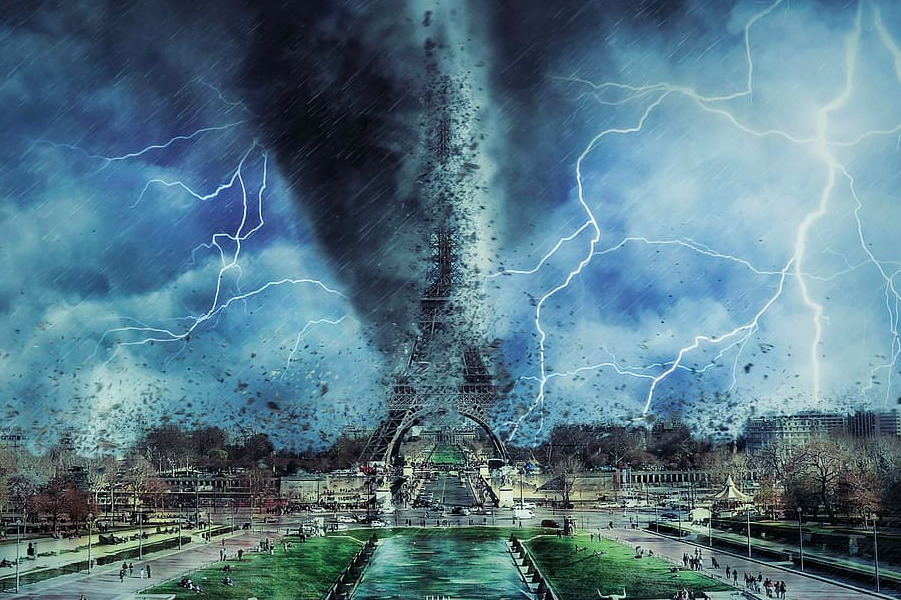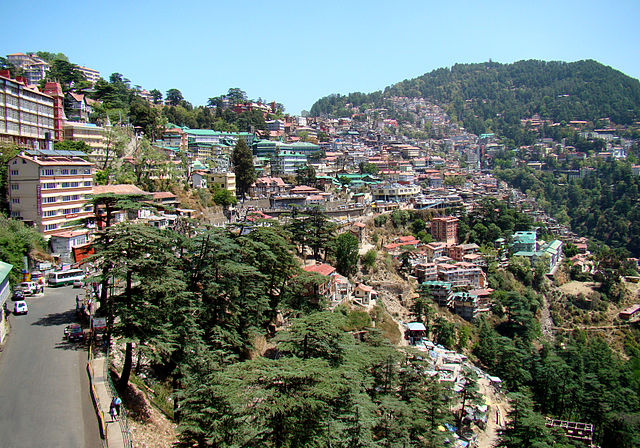Record-breaking snowfall in Madrid (loss of 1.4 billion euros), Storm Cristoph in UK, Cyclone Ana in Fiji, Winter storms in Texas, Dust storm in China, Flooding in New South Wales, Cyclone Seroja in Indonesia, Record temperatures in Moscow, Heat Dome in US & Bootleg fire in Oregon are 10 of the many extreme weather events witnessed in the year 2021.
Between 1970-2019 more than 91% of the deaths attributed to climate change/ weather-related disasters were reported in developing countries. October 13, marked the UN International Day for Disaster Risk Reduction (DRR) with the 2021 edition focussing on ‘international cooperation for developing countries to reduce their disaster risk and disaster losses.‘

India is extremely vulnerable to disasters due to weather-related events. In the year 2020, nearly 2067 lives were lost due to floods. In a cumulative figure of 15 most destructive events, a loss of nearly $ 150 billion was reported. Amphan Cyclone, Nisarga in Maharashtra, Ninar in Tamil Nadu, Bureni in Tamil Nadu along with heavy rainfall, floods, landslides, thunderstorms, lightning strikes, heat and cold waves killed hundreds of people in India.
The melting of a glacier in Uttrakhand, Cyclone Tauktai and Yaas, and more frequent heatwaves is a common phenomenon. It is estimated that the average temperature rose by 0.7 degrees Celsius from the beginning of the 20th century till 2018 and is further estimated to rise by 4.4 degrees Celsius by 2100. It is a catastrophe in the offing unless mitigation and adaptation strategies are properly oriented.
In a report of the Council on Energy, Environment and Water, nearly 75 % of districts, home to over 638 million people are considered extreme hotspots in India.
No wonder the crisis of climate change is real and claiming most of the lives in the world. The Sendai framework focuses on mapping the vulnerabilities and measuring disasters and creating an atlas of such vulnerabilities. Is it adequate? Not enough, as extreme climate events are happening more frequently with greater severity. Mitigation strategies will have to be ensured. But equally important are adaptive strategies.
Unfortunately, even after decades of deliberation at Sendai in Japan, most of the work remains on official paper and hardly anything concrete is done at the ground. So, what are the problems in implementing this framework?
Firstly, there is hardly any mapping done in the urban centres of the vulnerabilities. Hazard and risk assessment, which must be done of existing infrastructure including habitat and other social and physical infrastructure is of utmost importance. However, most of the cities do not have such mapping/atlas.
Secondly, if at all mapping is done, it is done with the help of consultants who hardly are able to reach out to people and engage them in such an exercise. What is called quantitative and qualitative analysis is hardly followed. The experts rely merely on quantitative data which definitely is important but misses the qualitative part which too is equally important. We have seen the participation of the people in Kerala during two successive floods that hit the state badly.
Thirdly, in cities where these assessments are done, there are different layers of mapping and different agencies conduct such an exercise. There is a famous saying whilst preparing such reports and that is: “the left does not speak to the right”. Different departments will measure but there shall hardly be any convergence.
Fourthly, convergence is the key and sharing of data is extremely important. Take for example in a town like Shimla where there is an existing snow manual and as the winter approaches, there are different departments that must be lined up. The role of the weather department is extremely important for an early warning system to be strengthened. Likewise, the municipal corporation has to take care of its roads and ensure that stone dust is placed at vulnerable spots so that at least the roads leading to the hospitals are maintained. The electricity department must ensure that the cables are proper and a reserve army of workers (especially Kashmiri workers) must be kept to ensure that in an eventuality of heavy snow and trees falling on cables the risk is minimised by clearing such fallen trees. Without convergence, this shall not work. But in most of the cities, such a form of convergence is hardly witnessed.
Fifthly, the onus of responsibility must be documented and executed in the disaster management plans. There are various plans: the national, state, district and even city disaster management plan of action. Unfortunately, the city plan, either not prepared or where such an exercise is done the authority under the CDMA it is not ratified; hence of no relevance. The CDMA’s must be empowered and build resilience to shoulder this responsibility.
The cities whilst creating this hazard risk assessment must ensure that a proper atlas is created which is done through a democratic participatory exercise. These plans must be inclusive with adequate emphasis for vulnerable groups; both economic and physical. Special emphasis must be laid on the informal workers, especially women and the disabled who require utmost attention. The people must be part and parcel of this exercise and only then shall they will own such disaster management documents. Else these documents are presented in fancy conferences which are never looked into whence the disaster strikes.
Shimla created a wide atlas measuring the vulnerabilities in 2015-17 with an acronym BUARE (Building Urban Adaptation and Resilience in Emergencies). BUARE in local dialect means community participation in sowing, harvesting and many other functions in the villages. The same was presented in the NPDRR (national Platform for Disaster Risk Reduction). This exercise was done with the massive participation of the people. However, when the actual responsibility is supposed to be shared once again it is the DDMA that supersedes the CDMA and such exercises do not bear the required fruit.
Hence the key to ensuring that the DRR principles are actually implemented must be MMRE- map, measure, reduce, execute.
Former deputy mayor Shimla.
National convenor, NCU, National Coalition for Inclusive & Sustainable Urbanisation.



